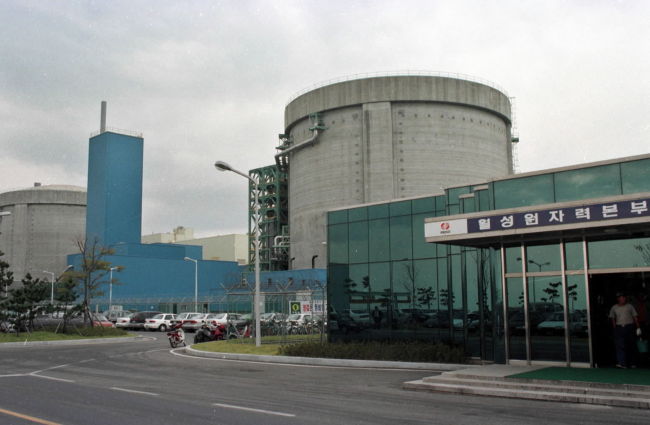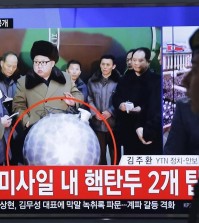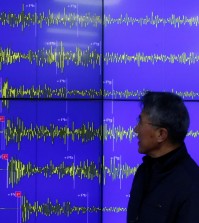- California Assembly OKs highest minimum wage in nation
- S. Korea unveils first graphic cigarette warnings
- US joins with South Korea, Japan in bid to deter North Korea
- LPGA golfer Chun In-gee finally back in action
- S. Korea won’t be top seed in final World Cup qualification round
- US men’s soccer misses 2nd straight Olympics
- US back on track in qualifying with 4-0 win over Guatemala
- High-intensity workout injuries spawn cottage industry
- CDC expands range of Zika mosquitoes into parts of Northeast
- Who knew? ‘The Walking Dead’ is helping families connect
Greenpeace alleges 6 S. Korean nuclear reactors are in danger of disaster

A nuclear reactor at South Korea’s Wolseong nuclear power plant, located in the country’s southeastern provincial city of Gyeongju (Yonhap)
By Jung Min-ho
Components in six of 14 of the South Korea’s 23 nuclear reactors were made with an ineffective material, which could cause an environmental disaster similar to that which occurred in Fukushima three years ago, Greenpeace International alleged Wednesday.
Inconel-600, a nickel chromium alloy, is used for over 4,000 components in each nuclear power plant, including the reactor vessel heads, steam generators and heating pipes. According to the environmental campaign group, governments around the world have replaced this “ineffective” material with more durable substitutes since the 1980s, while successive administrations here, including the current one, continue to use it.
“Countries such as the United States and France have either shut down entire nuclear power plants or removed components that contained Inconel 600,” said Jang Da-ul, a climate and energy campaigner with Greenpeace at a press conference in Seoul. ”But Korea has tinkered with the problem by soldering cracked spots, instead of providing fundamental solutions.”
An official from Korea Hydro & Nuclear Power said the firm plans to replace the steam generators at Hanbit Nuclear Power Plant Unit 3 and 4, but that it does not have any plans for the other plants.
According to Greenpeace, in Korea, there have been 12 accidents related to Inconel 600, including one that temporarily halted operations at the Hanul Nuclear Power Plant Unit 4 in 2002 after its steam generator broke down.
Since the lack of durability of Inconel 600 was identified in the United States in the mid-1970s, countries such as the U.S., France and Japan have replaced steam generators in their nuclear power plants with ones made from more durable material such as Inconel 690.
A total of 53 steam generators in the U.S. have been replaced. The country has 62 commercially operating nuclear power plants with 100 nuclear reactors.
“The most threatening thing about this problem is that it is completely unpredictable. It could result in a major disaster anytime without having any technical problems or a natural disaster,” Jang said.
Suh Kyun-ryul, a professor of atomic engineering at Seoul National University, also said the government should take action immediately to address the safety concerns.
“Removing Inconel 600 from all nuclear power plants in Korea is much more important than planning safety measures for the risk of natural disasters to the plants,” he said.
The Fukushima nuclear meltdown has been estimated to cost up to $100 billion for the cleanup alone over the next 40 years, sending an alarming message to Korea ― a country that relies on nuclear power for 30 percent of its energy needs.

















Pingback: Greenpeace Alleges 6 S. Korean Nuclear Reactors are in Danger of Disaster | Citizen Daily